What you can do in Uppsala libraries are more than academic study
If you come from the places southern than Sweden, the first challenge of your adaption in Uppsala around this season is definitely the cold. Just check the weekly temperature on the weather forecast(minus 7 to 11, minus 16) or take a glimpse at the snowy scene from the window, it is shocking enough to attempt me to stay indoor. However, staying in a ten to twenty meter room for a whole day sounds very boring and pessimistic. Then where can I go to avoid the cold but also have some fun and gain new knowledge? Libraries in Uppsala is a good option. They are not merely the places where people always associate with academic study. Among all university and city libraries in Uppsala, I choose three libraries to display their multi-functions which we all can benefit from. By taking this library adventure, you can more or less a have partial understanding of Swedish culture in terms of their interior design, value of life, and the accumulation of social and cultural assets.
- Carolina Rediviva (Uppsala University Library)
- Karin Boye-biblioteket(Karin Boye library in English Park Campus)
- Stadsbiblioteket (City Library in Uppsala)
Karin Boye-biblioteket A personal space for relaxing and self reflection
Sometimes, after the fight for a hectic day, our body and mind are in need of a personal space. The space is not necessarily to be totally silent or private, but we expect the environment and atmosphere to be cozy and free enough. In that moment, we earn our personal time either to reflect our whole day, our next plan, or simply just to take a break. To find this place, many people think it is mostly to do with the personal status, but there is something special a space can do to stimulate this feeling. I found these elements in Karin Boye-biblioteket during my first visit.
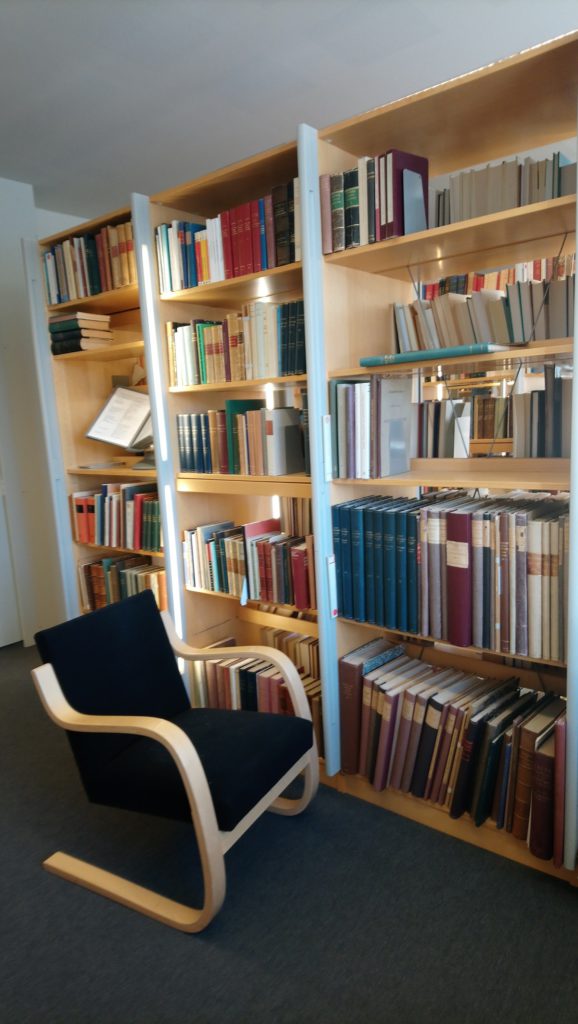
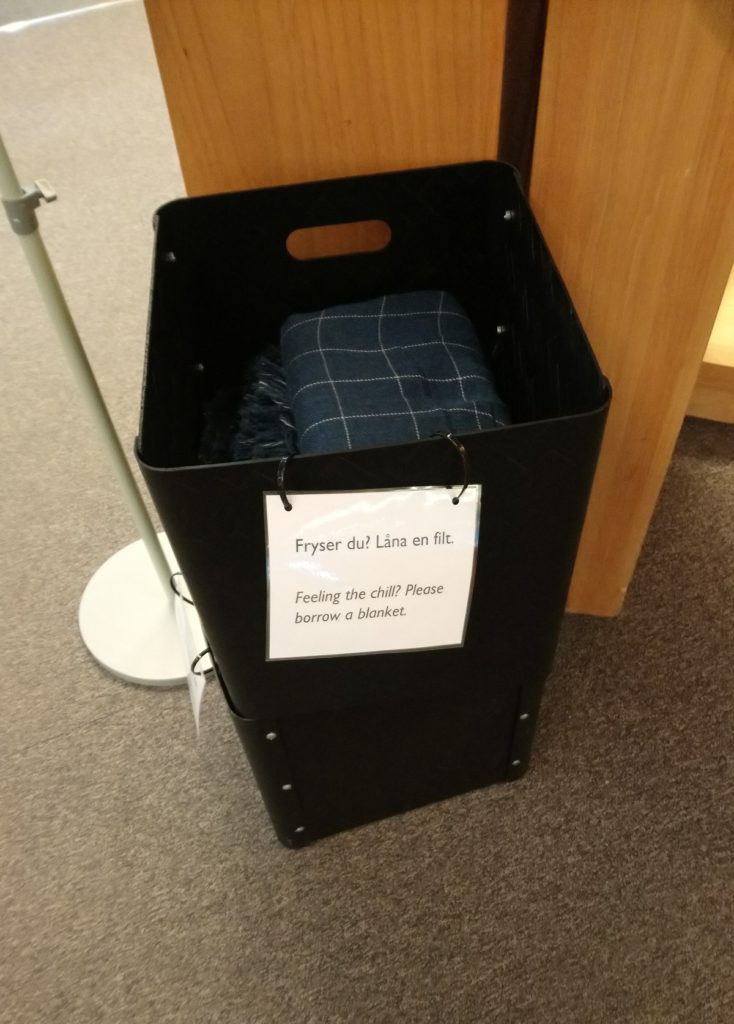
Just a couple of days after my arrival in Uppsala, I asked the librarian where I can find a meeting room inside the library. The librarian nicely explained to me, “There is no specific meeting room in the library, but you can find almost everywhere in the campus with compartments or chairs and tables put together for people to discuss.” Next, she showed me a graphic about volume use suggestion in different areas of the library from normal voice & group study area, low voice area, quiet area, to quite reading room. Though it is a suggestion, a clear division between collaborative and individual learning shows respect for different users and ensures all of them can enjoy good quality time in the library. Before climbing up to the first floor, at the small corner right next to the stairs I found a basket. Some fluffy blankets sit right inside the basket. They are provided by the library for anyone who needs to keep warm during their reading at the library. Once everything I needed is well taken care of, I grabbed a seat against the window. While dropping myself off to the story, though my physical being stayed in this warm space, I was free to be brought to anywhere without hindrance of any kind of weather condition.
Carolina Rediviva – A living museum to appreciate historic architecture and installation
Have you ever thought of making a pilgrimage to the library? This is not an exaggeration but the attitude I hold every time when I visit Carolina Rediviva. No matter the building itself as a historic architecture or the interior installation of collections and reading area, every piece of this library displays itself as a precious treasure that you feel like you are visiting a private museum.
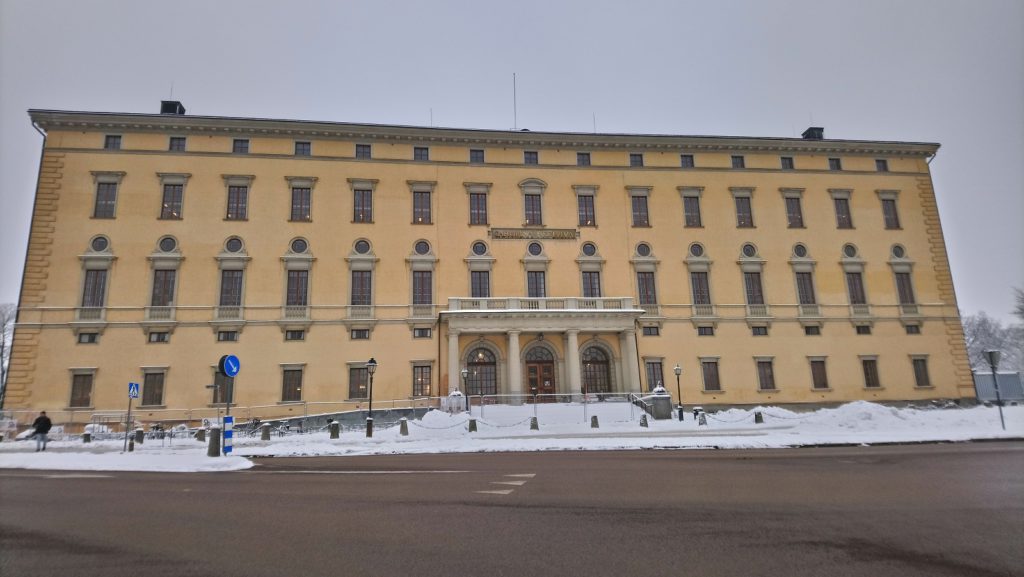
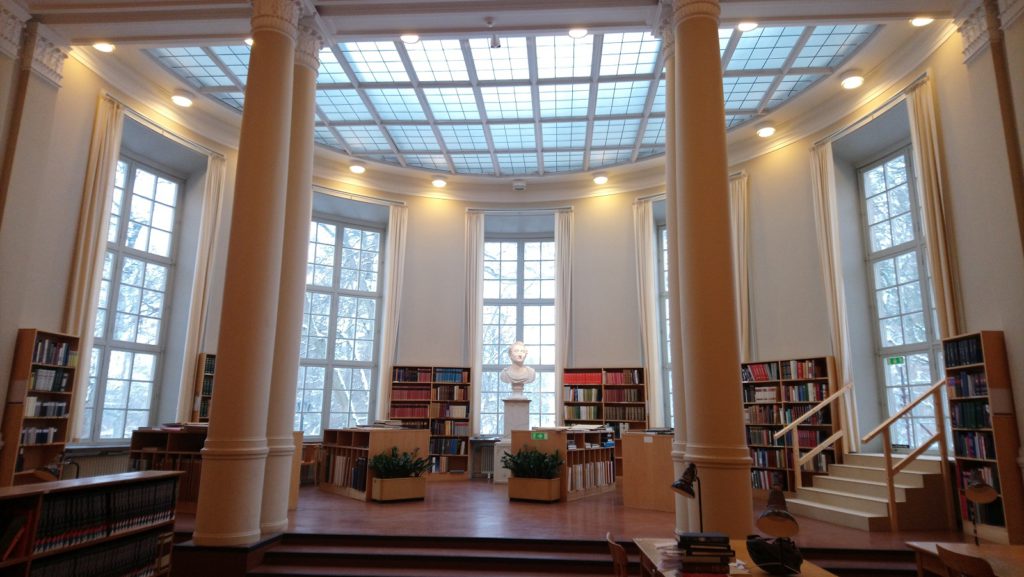
The building have sit on one tip of the triangle together with the cathedral and castle since mid-18 century. At first, it was university’s main building and not used as a library until late 18 century after the new university building was built. From the perspective of landscape, the way of my entry has to go through an upward slope, which somehow creates a sense of holiness. Currently, the library is under renovation, so visitors have to enter from the side door. The ground floor looks simple but precise. While taking a bird’s eye view from the first floor, the carpet with several white lines extending to the end becomes the background of all the objects and gives fluidity to the space. Following these lines, I am lead to the great reading room (A). In front of me is a hemisphere area, a bust of marble sculpture poses himself in the center surrounded by other bookshelves filled with art related portfolios and books. My right and left hand side are rows of study tables heading to two book walls symmetrically echoing to each other. The colorful book covers shine upon the tall beige columns and ceiling. I am in awe of this incredible scene where the magic power of knowledge has been ingrained in this particular place for more than three hundred years.
Stadsbiblioteket – A social venue to exchange ideas
A municipal level of library is a melting pot where gathers people with all kinds of backgrounds. Not being limited to students or researchers gives me a wider perspective to examine whether Uppsala deserves the prestige: the city of learning, from the social functions that Stadsbiblioteket possess.
Outside of the library, first of all, you see a row of posters promoting the latest cultural activities. The topics range from political, gender, environmental, social issues. Going up through the stairs, the magazine and newspaper area is at the right hand side, but it is rather chaotic for these materials are usually for quick and skim reading and encourage casual conversations or multitasks while reading. If you want to find a more quite place, go straight to the main building. The reception desk is a three dimensional circle cut into five pieces. As long as you have questions, get a number from the machine, and wait for your personal librarian’s assistance. For an international student who has zero Swedish, asking for help is nothing shameful. From the official website, direction boards, indication on the bookshelves, and some practical paper information are almost in Swedish. Even I tried to use google translation in advance, it is not easy to find what I want on the spot. As a simple sentence from its official websites said, “At the library, you can get help finding a book for you.” This slogan is not only for people who have language difficulty. It also applies to different types of learners such as those who need bigger text print, audio service, sign language, etc.
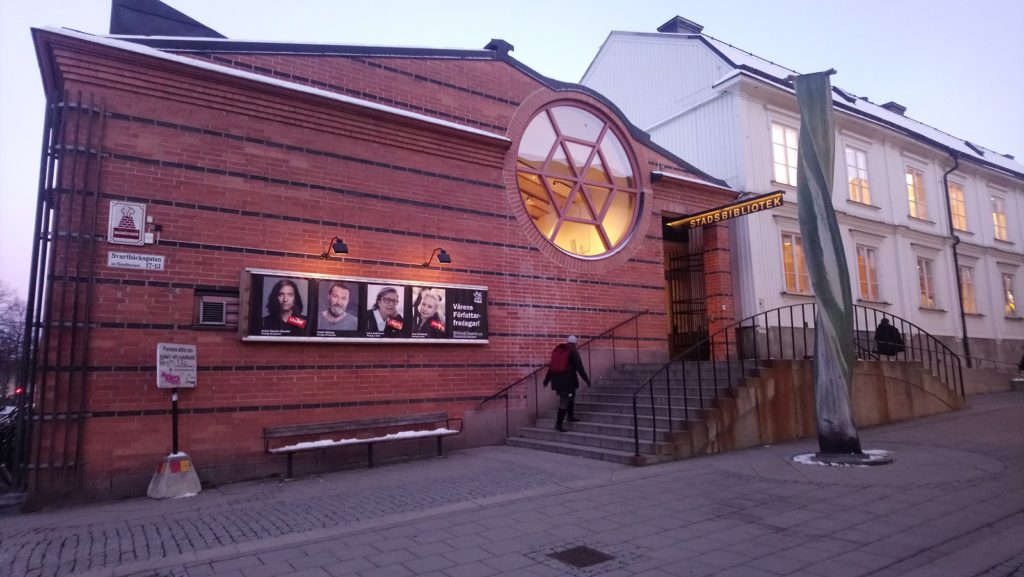
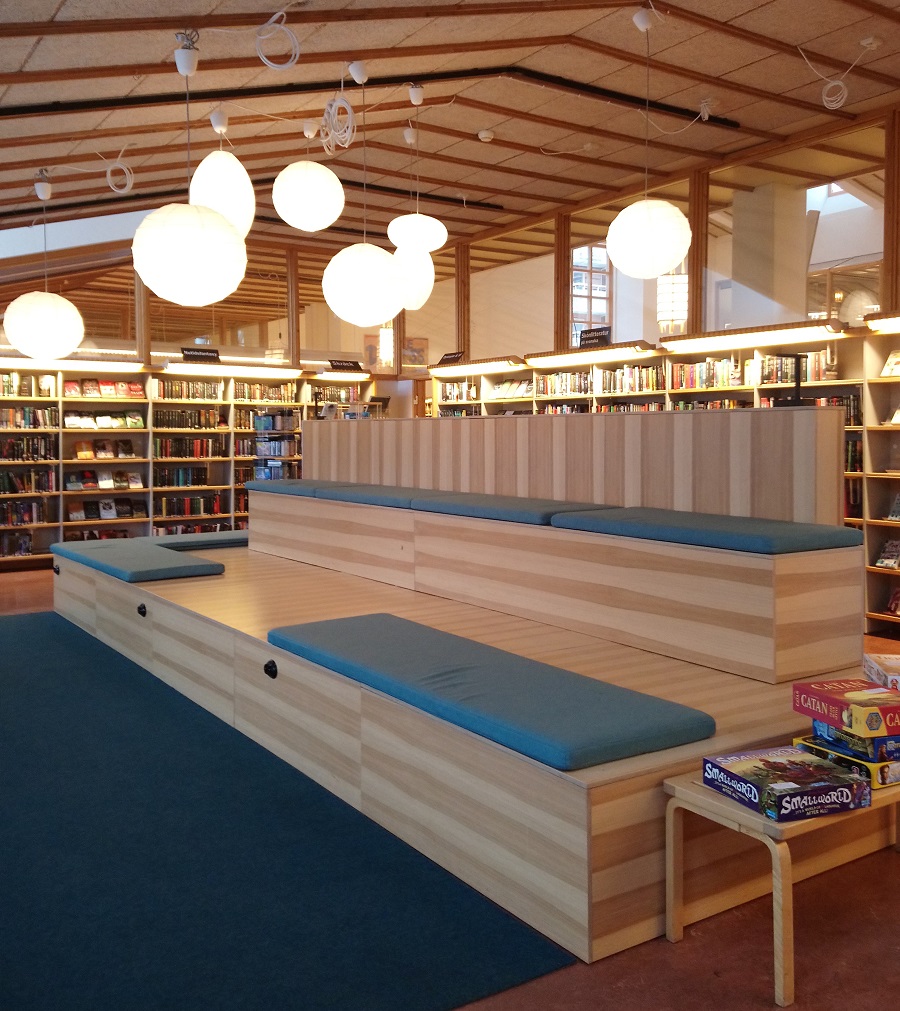
Behind the reception desk, a small podium is set there. Two sofa and an advertisement board give me a hint for this setting must be a book forum. In this same area, special book stands present the book suggestion from the librarians based on the monthly theme. At the periphery of the rectangular library, rooms for language practice particularly Swedish, youth books and games, biography, novel, audio collections are available, down to the basement for children books, or to the second floor for collections of foreign languages and studying room. The library also hosts activities to increase social interactions such as lectures, exhibitions, book club, help for homework, etc.
The latest PISA assessment result (2015) shows students in Sweden score 500 points, on average, in reading – above the OECD average of 493 points. Their performance stands competitively out from the total 72 participating countries and economies. Reading is an ability to learn new knowledge, which easily happens in the library. As libraries are not just a place for academic study, its versatility becomes the stimulus to attract people’s continued visit. As long as going to the library is like an adventure, a habit of doing cultural activities, various motivations are satisfied, and that could bring about a power of life in all stages and seasons.
/HuiYu
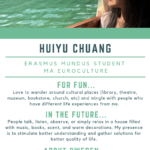


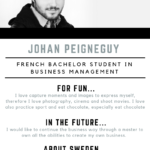


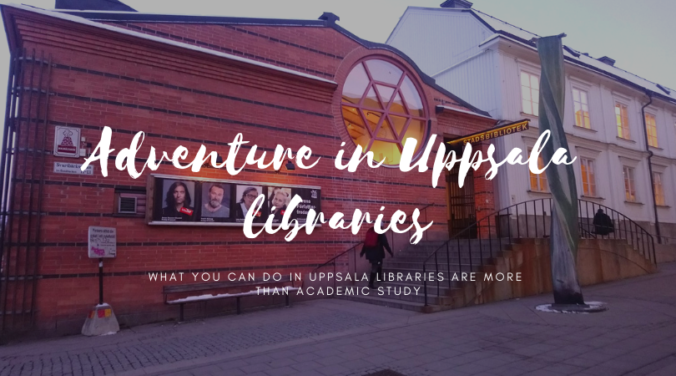







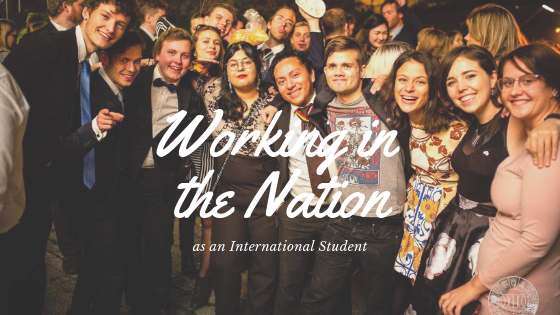

Recent Comments